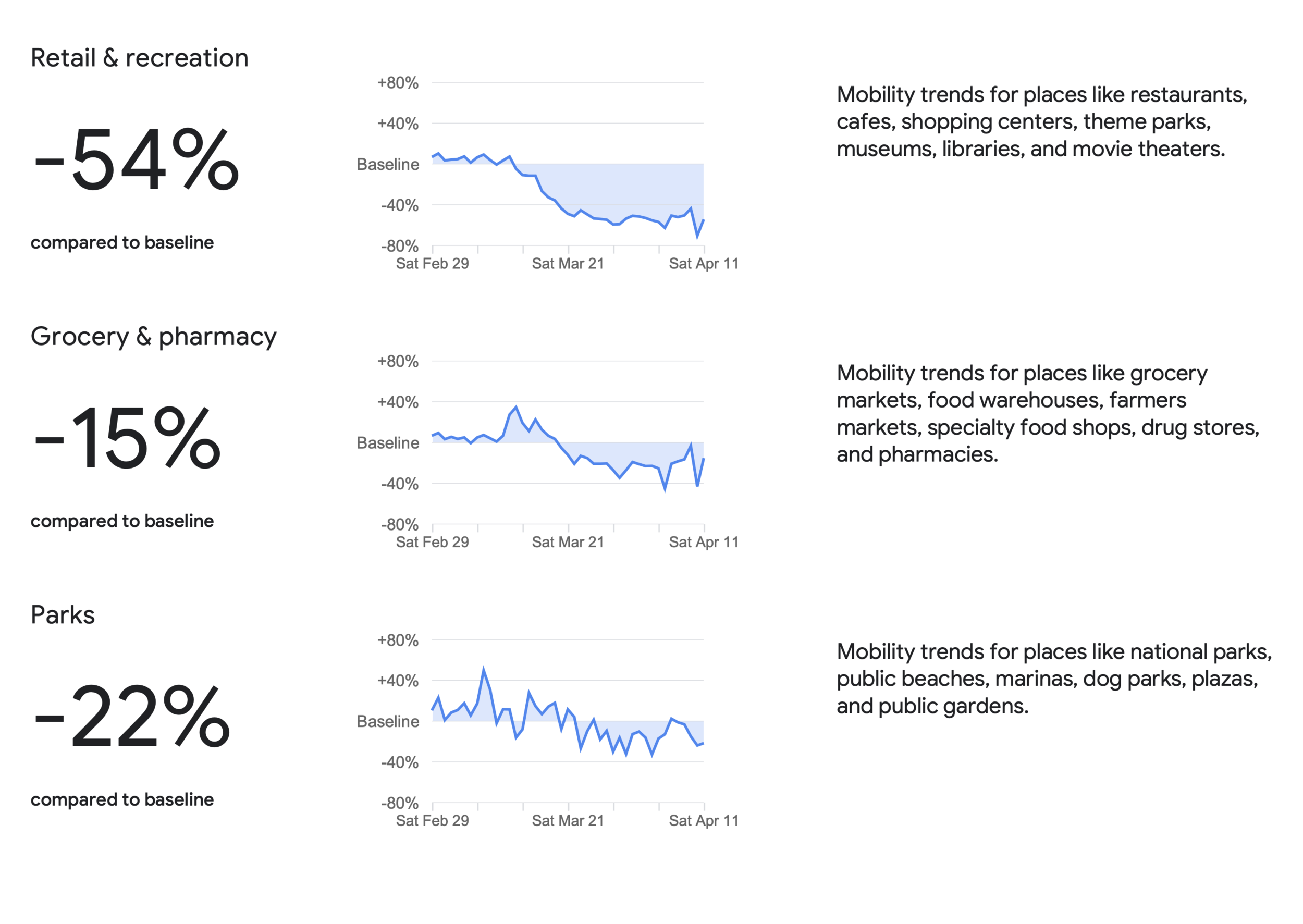Tech in last 7 Days - Week Ending Friday, April 17, 2020
This is a weekly column, highlighting interesting and/or valuable tech developments from the past 7 days, which are impacting our society directly or indirectly. It also gives some vague sense of the trajectory that the technology as a whole is taking. The aim is to share the information concisely, in an easy to understand manner, with not more than 5-6 min read time.
1- FOLLOWING GOOGLE’S LEAD APPLE HAS ALSO MADE ITS MOBILITY DATA AVAILABLE
This is Apple’s response to help mitigate the spread of COVID-19. Obviously Google’s mobility data is going to be more granular and detailed, simply because they have more data. Let’s have a quick look.
Apple’s Mobility Data for Toronto
The change in direction requests for driving, walking & transit for the city of Toronto since January 13, 2020.
Google’s Mobility Data for Canada
Trends shown from Feb 29 to Apr 11.
KEY POINTS:
Apple has data available for cities and countries, while Google’s data is mainly categorized between major regions (states, provinces) and countries.
Both companies anonymize the data. The data can’t be used to identify a person. That’s what they claim.
Google’s data is classified into 6 different categories, namely retail & recreation, grocery & pharmacy, parks, transit stations, work places and residential. as opposed to Apple’s data, which is only driving, walking & transit.
2- WHAT DID MIT MACHINE LEARNING COVID-19 MODEL SAY ABOUT RELAXING QUARANTINE RULES IN THE US?
First thing that come to mind is how accurate is this ML (Machine Learning) model? The model was trained on data (including training on quarantine effects) from Wuhan from Jan 24 till March 3. Model was then tested for its predictions, which proved to be good up to April 1. The predictions were even validated for Italy and South Korea. One thing to keep in mind is that ML models are only as good as the data that gets fed into them.
The following is a visual representation of MIT ML model’s prediction about relaxing quarantine rules.
ML Covid-19 Model
The number of infections the US would experience starting from 1st April if the US were to follow its current quarantine policy as opposed to gradually adjust to adopting the respective quarantine models
In plain english, this is what the model says:
On the other hand, in agreement with National Institute of Allergy and Infectious Diseases estimates (Miller 2020), we forecast that relaxing or abandoning the quarantine policies gradually over the period of the next 17 days may well lead to ∼ 1 million infections without any stagnation in the infected case count by mid April 2020.
Here is another plain english explanation.
3- ALL OF THE CORE GITHUB FEATURES ARE NOW FREE FOR EVERYONE
Github is a version control system, which helps developers efficiently store code, track changes, contribute, be recognized and be able to connect with other people in the community. Although the platform is most commonly used by developers, it can be used by other professionals as well, though there are better alternatives available.
You can read GitHub FAQs about price plan changes for more information.
4- FACEBOOK & ITS PLAN TO SIMULATE A FACEBOOK LIKE ENVIRONMENT
Facebook calls this Web-Enabled Simulation (WES). The idea is to deploy bots mimicking real user behaviour to real facebook platform but isolated from the real world users. The bots will be trained to act like bad actors and have the ability to learn, supervised or unsupervised. Some bots could get read-only access to the “real” Facebook, as long as they weren’t accessing data that violated privacy rules.
Facebook WES
Generic WES System Infrastructure. Real users and bots reside on the same overall platform infrastructure. There is a conceptual isolation layer between them that determines the level of interaction possible, if any, between bots and real users. There is also a mechanism layer that mediates the actions and observations that the bots can per- form through the platform.(research.fb.com)
Facebook will use WES to enhance its ability to detect bad actors, discover potential privacy issues and catch bugs not normally caught by traditional testing. This will help in improving Facebook as a service. You can read more here.
iPhone SE 2020
There is no Face ID. It supports WiFi 6. It has a single lens 12 megapixel rear camera and 7-megapixel front facing camera.
Starts from $599.






